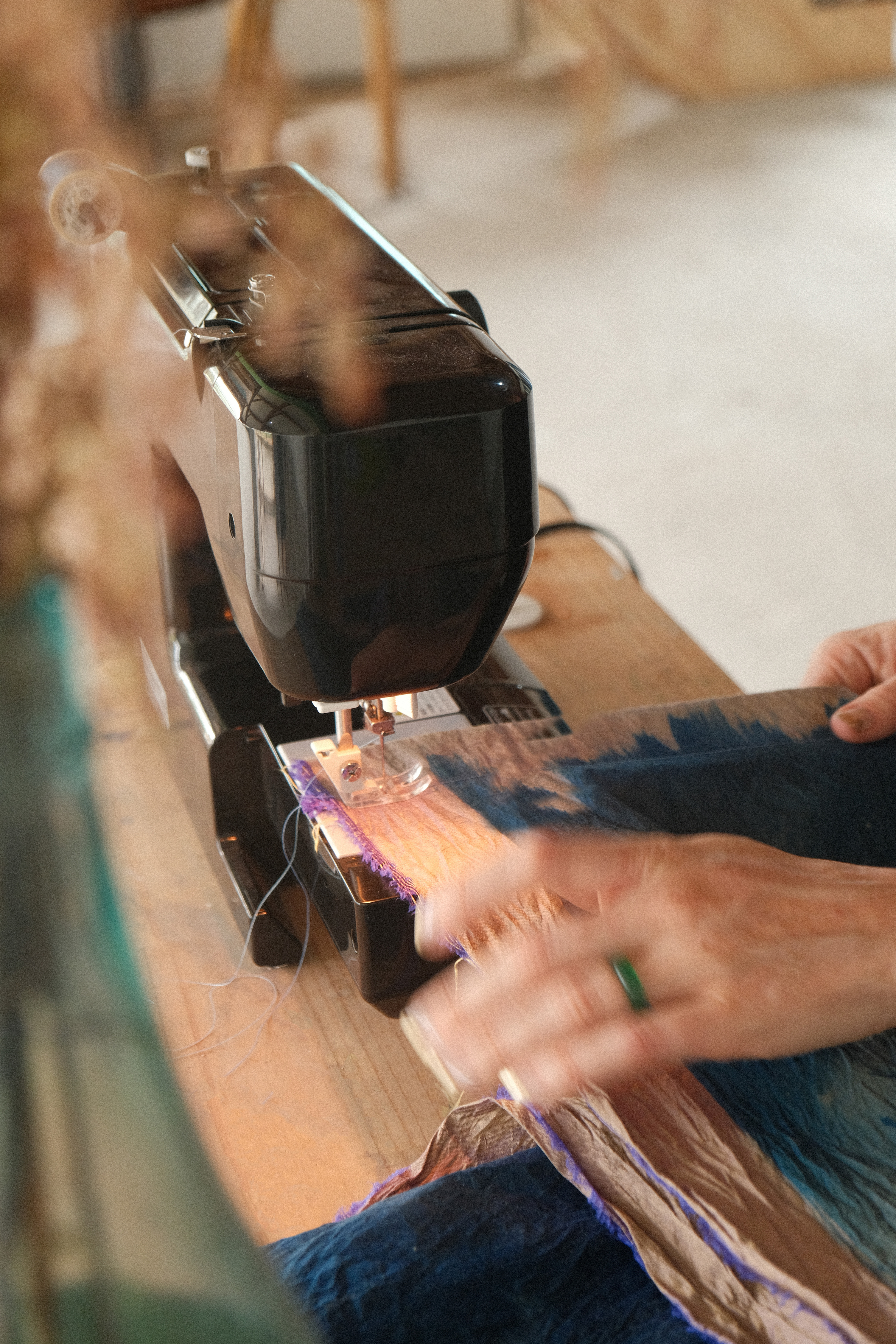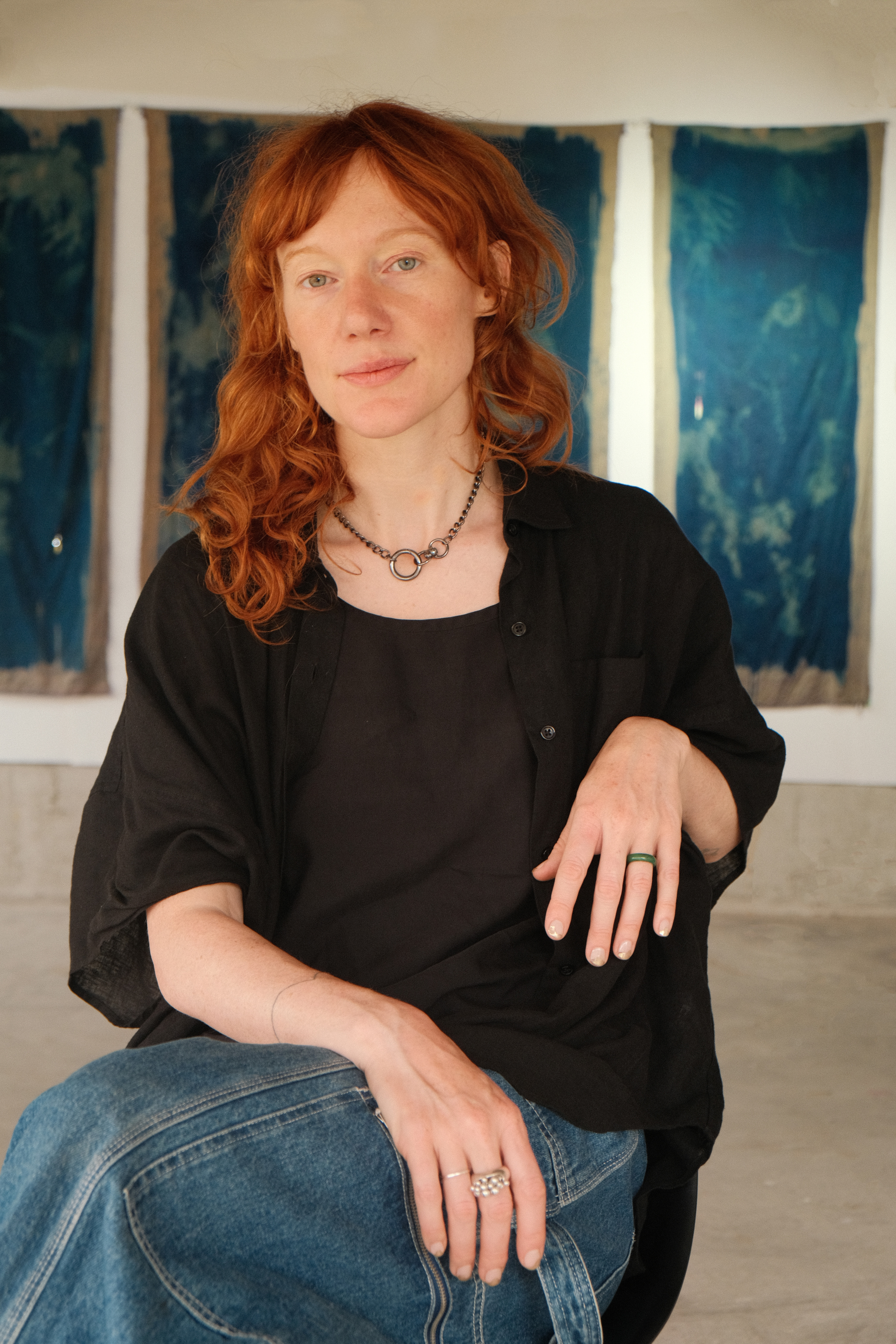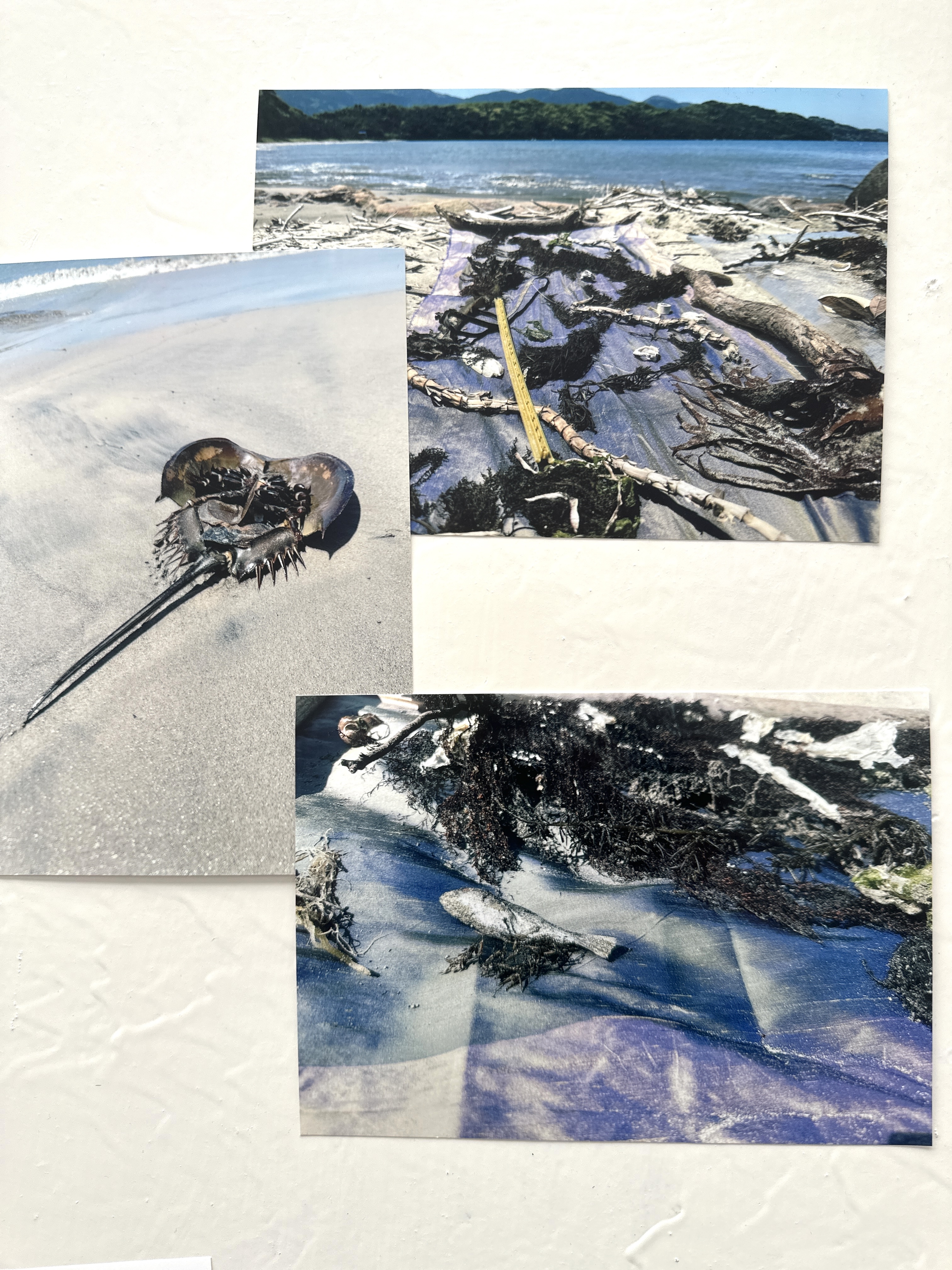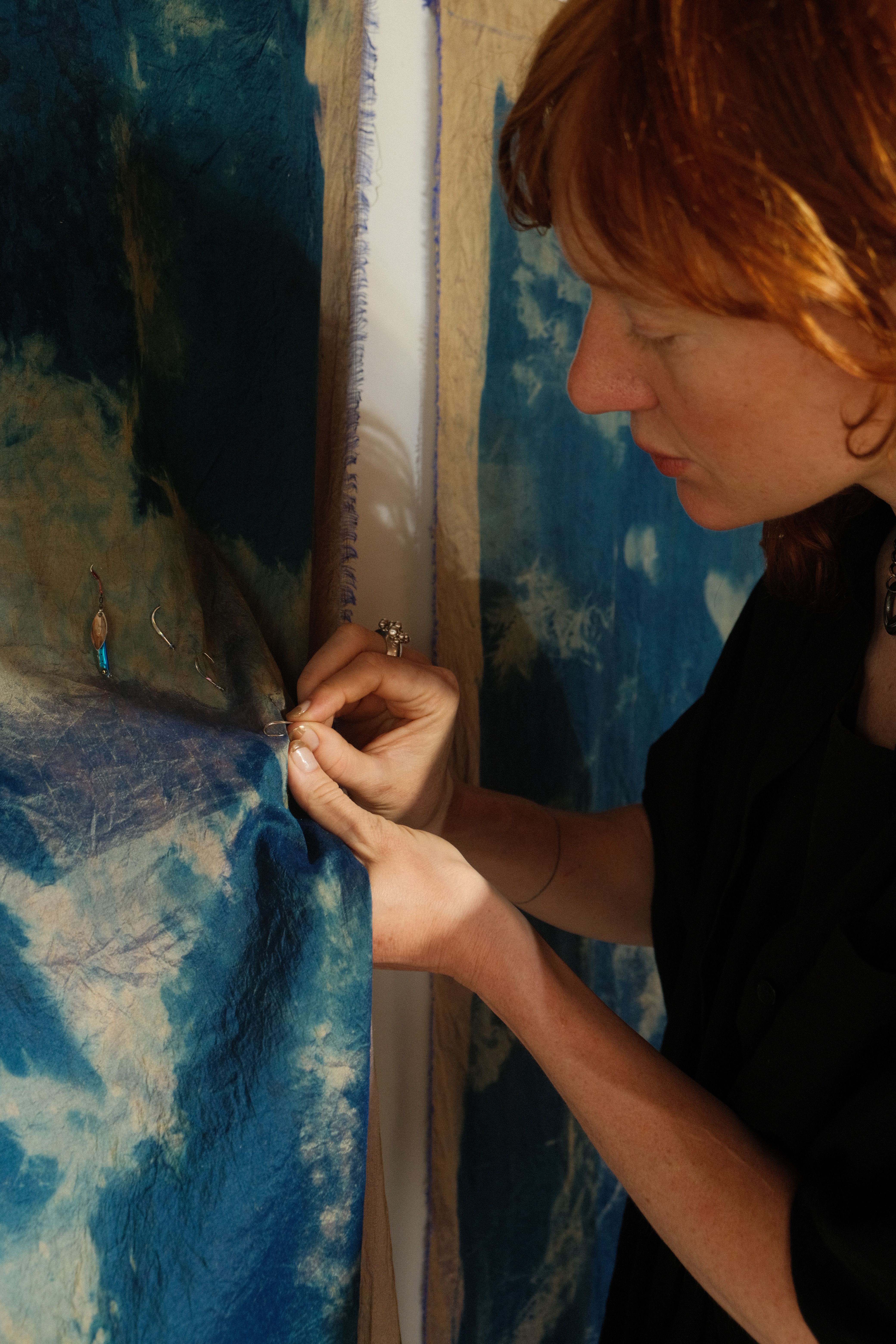𝕹𝖆𝖌𝖔𝖗𝖎/ 𝕭𝖑𝖚𝖊 : 名残 / ブルー
(Work in progress)
For more than half a decade my research has been focused on nuclear history and nuclear realities specifically of waste, grief, and inheritance . The opportunity to peruse this research in Japan has been life changing. I am humbled, in awe, horror—so much spirit and reverence.
During my month-long residency in Japan, I worked on a new project that focuses on water, both the poetics and politics of this natural resource and its role in nuclear developments.
Working on the beach I created 11 cyanotype silk banners. Capturing images with the suns rays and the remains of the shoreline.
As I would work, the lines created on the beach from the receding tide became a new measurement of time. An observation that the Japanese language have a word for: Nagori—which also mean the act of lingering on a moment before it passes, the nostalgic sense of bereavement experienced as ephemerality is realized.
This word feel very fitting for the research and theme of this project.
One fortuitous day I found a horseshoe crab on the beach. These creatures are so incredible. Horseshoe crabs are “living fossils” meaning they have existed nearly unchanged for at least 445 million years, well before even dinosaurs existed.
They are also highly sought after by the medical industry for their blood—a bright blue colour—because it contains this miraculous blood clotting agent that detects bacteria and has been adopted as a essential test for vaccines. Unfortunately they are at risk because of this. The tension of this, to threaten the existence of one of the earth’s oldest creatures, for our own life expectancy.
My material interest in cyanotype and seaweed (iodine) is sparked not only by their material quality but have historically been consumed to protect the human thyroid in the case of a nuclear emergency.
Thank you to Canada Council for the Arts and the Conseil des arts et des lettres du Québec for their generous support in this research.




